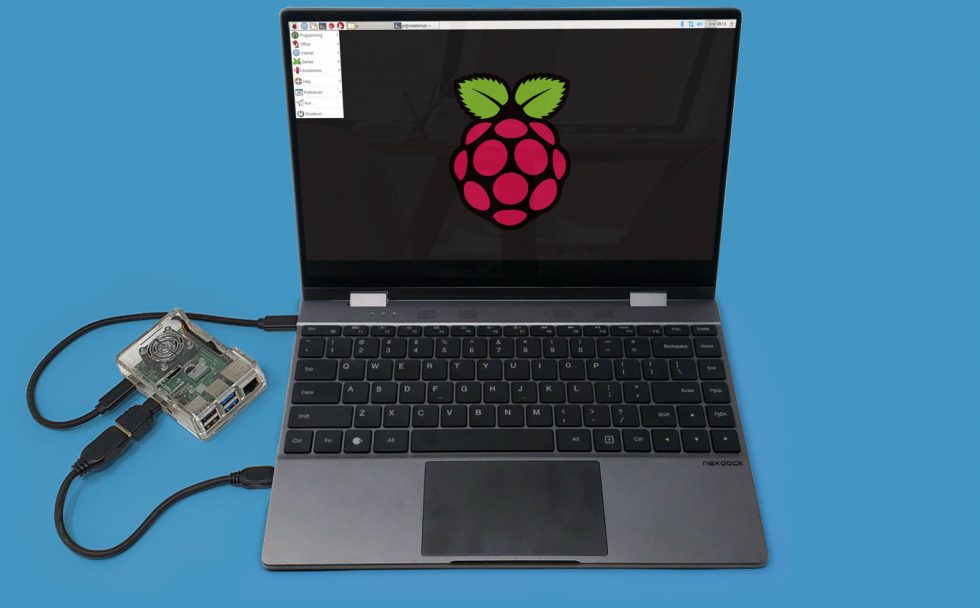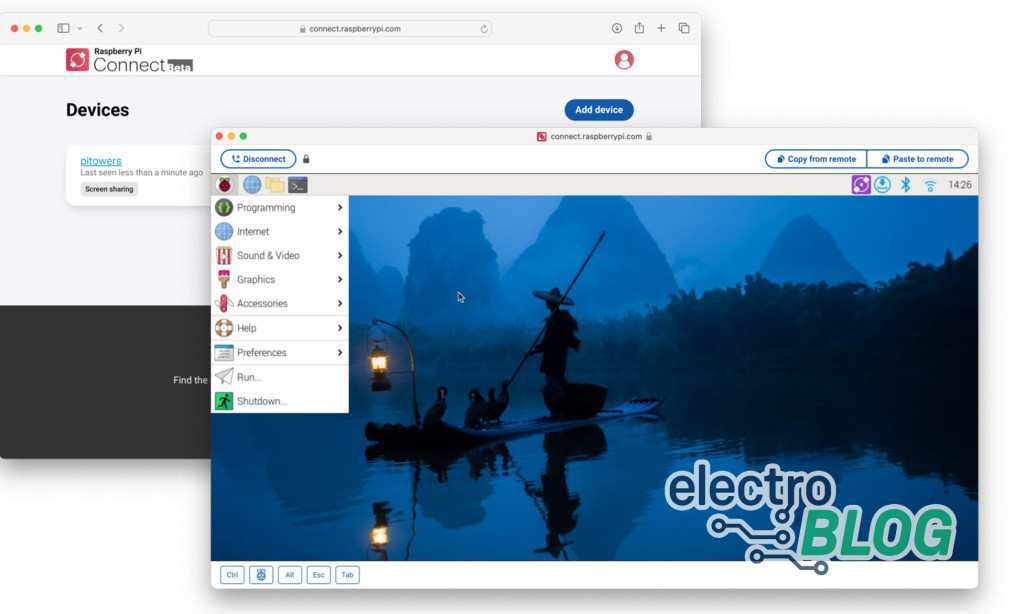How To Access Raspberry Pi From Anywhere On Windows 10: The Ultimate Guide
Listen up, tech enthusiasts and tinkerers! If you're into DIY projects, home automation, or just want to level up your tech game, then you're in the right place. Today, we're diving deep into how to access Raspberry Pi from anywhere on Windows 10. Yeah, you heard that right—access your Pi remotely, whether you're at home, at the office, or chilling at a café. This is gonna blow your mind, trust me.
Now, before we jump into the nitty-gritty details, let me tell you why this matters. Imagine being able to control your home setup, check on your IoT devices, or even manage your server—all without needing to physically touch your Raspberry Pi. Sounds awesome, right? That's exactly what we're gonna teach you today. No more excuses for not keeping an eye on your smart home when you're miles away!
But hey, before we get too far ahead, let’s set the stage. This guide is packed with step-by-step instructions, tips, tricks, and even some troubleshooting advice. So grab a coffee, sit back, and let’s make this happen. Ready? Let’s go!
Read also:Remote Access For Raspberry Pi And Iot Devices Free Download Your Ultimate Guide
Table of Contents
Setting Up Windows 10 for Remote Access
Setting Up a VPN for Secure Connections
Using SSH to Access Raspberry Pi
Read also:Barry Storage Wars The Ultimate Guide To The King Of Auctions
Common Issues and How to Fix Them
Best Practices for Secure Remote Access
Introduction to Remote Access
Alright, so what exactly does "remote access" mean in this context? Simply put, it’s the ability to control or interact with your Raspberry Pi from another computer, no matter where you are. And when we say "anywhere," we mean ANYWHERE—literally across the globe. Whether you're using your Windows 10 machine at work or lounging on a beach with your laptop, you can still connect to your Pi as if it were sitting right next to you.
But why would you want to do this? Well, think about all the possibilities. You could monitor your home security cameras, adjust smart lighting, or even debug your Python scripts—all without leaving your couch. Plus, if you're into more advanced stuff like running a web server or hosting a media center, remote access is a must-have skill.
Now, before we dive into the technical side, let’s talk about the basics of Raspberry Pi. Stick with me, this is gonna be good.
Raspberry Pi Basics
For those who might be new to the world of Raspberry Pi, here's a quick rundown. The Raspberry Pi is basically a tiny, affordable computer that can do everything from running lightweight operating systems to controlling complex hardware setups. It’s a favorite among hobbyists, educators, and even professional developers.
Here’s what you need to know:
- It’s Compact: Small enough to fit in your pocket, but powerful enough to run multiple applications.
- It’s Versatile: From media centers to IoT devices, the Pi can handle a wide range of projects.
- It’s Affordable: You don’t need to break the bank to get started with Raspberry Pi.
And hey, if you’re already familiar with Pi, awesome! Let’s move on to setting up your Windows 10 machine for remote access.
Setting Up Windows 10 for Remote Access
Before you can start accessing your Raspberry Pi, you’ll need to ensure that your Windows 10 machine is ready to roll. Here’s how you can prep your PC:
First things first, you’ll need to enable Remote Desktop on your Windows machine. Here’s how:
- Go to Settings > System > Remote Desktop.
- Turn on the "Allow Remote Connections to This Computer" option.
- Make sure your PC is connected to the same network as your Raspberry Pi (at least initially).
Once that’s done, you’re good to go. But wait, there’s more! You’ll also need to configure port forwarding on your router. Let’s talk about that next.
Understanding Port Forwarding
Port forwarding might sound intimidating, but it’s actually pretty straightforward. Essentially, it’s a way to direct incoming traffic from the internet to a specific device on your local network—in this case, your Raspberry Pi.
Here’s a step-by-step guide to setting up port forwarding:
- Log in to your router’s admin panel. Usually, you can do this by typing your router’s IP address into your browser (e.g., 192.168.0.1).
- Find the "Port Forwarding" or "Virtual Server" section. This might vary depending on your router model.
- Add a new rule, specifying the port number (usually 22 for SSH) and the IP address of your Raspberry Pi.
That’s it! With port forwarding set up, you’re one step closer to accessing your Pi from anywhere.
Setting Up a VPN for Secure Connections
Security is key when it comes to remote access. You don’t want just anyone snooping around your Raspberry Pi, right? That’s where a Virtual Private Network (VPN) comes in. A VPN creates a secure tunnel between your Windows 10 machine and your Pi, ensuring that all your data stays private.
Here are a few popular VPN options for Raspberry Pi:
- OpenVPN: A widely-used open-source solution that’s easy to set up.
- WireGuard: Known for its speed and simplicity, WireGuard is a great choice for beginners.
- PIA (Private Internet Access): A user-friendly option with excellent customer support.
Choose the one that works best for you, and follow the setup instructions provided by the service. Trust me, it’s worth the extra effort.
Using SSH to Access Raspberry Pi
Now we’re getting to the fun part: SSH (Secure Shell). SSH is a protocol that allows you to securely connect to your Raspberry Pi from another device. It’s like having a direct line of communication, but with all the security bells and whistles.
Here’s how to set up SSH on your Raspberry Pi:
- Make sure SSH is enabled on your Pi. You can do this by running the command
sudo raspi-configand navigating to the "Interfacing Options" menu. - Install an SSH client on your Windows 10 machine, like PuTTY or Windows Terminal.
- Use your Pi’s IP address to establish a connection. For example,
ssh pi@192.168.0.10.
Boom! You’re now connected to your Raspberry Pi via SSH. Easy peasy.
Software Tools You’ll Need
While SSH is a powerful tool, there are other software options you might find useful when accessing your Raspberry Pi remotely. Here are a few recommendations:
- VNC Viewer: A graphical remote desktop solution that lets you see your Pi’s desktop in real-time.
- FileZilla: A file transfer client that makes it easy to move files between your Windows machine and your Pi.
- TeamViewer: A versatile remote access tool that works across multiple platforms.
Feel free to experiment with these tools and see which ones work best for your needs.
Common Issues and How to Fix Them
Let’s face it—things don’t always go as planned. Here are a few common issues you might encounter when trying to access your Raspberry Pi remotely, along with some solutions:
- Connection Refused: Double-check your IP address and ensure that SSH is enabled on your Pi.
- Port Forwarding Not Working: Verify that your router settings are correct and restart your router if necessary.
- Slow Connection: Consider upgrading your internet plan or optimizing your network settings.
Still stuck? Don’t worry, there’s plenty of help available online. Just remember, persistence is key!
Best Practices for Secure Remote Access
Now that you know how to access your Raspberry Pi remotely, let’s talk about best practices to keep everything secure:
- Use Strong Passwords: Avoid using simple or easily guessable passwords for your Pi.
- Enable Two-Factor Authentication: Add an extra layer of security to your remote connections.
- Keep Your Software Updated: Regularly update your Pi’s operating system and any software you’re using.
By following these tips, you’ll ensure that your Raspberry Pi stays safe and secure, no matter where you’re accessing it from.
Wrapping It All Up
There you have it, folks! You now know how to access Raspberry Pi from anywhere on Windows 10. Whether you’re using SSH, VNC, or a VPN, the possibilities are endless. From home automation to remote debugging, the world is your oyster.
So what are you waiting for? Grab your Raspberry Pi, fire up your Windows 10 machine, and start exploring. And don’t forget to share this guide with your tech-savvy friends. Together, we can build a smarter, more connected world.
Got any questions or feedback? Drop a comment below and let’s keep the conversation going. Happy tinkering!
Article Recommendations


